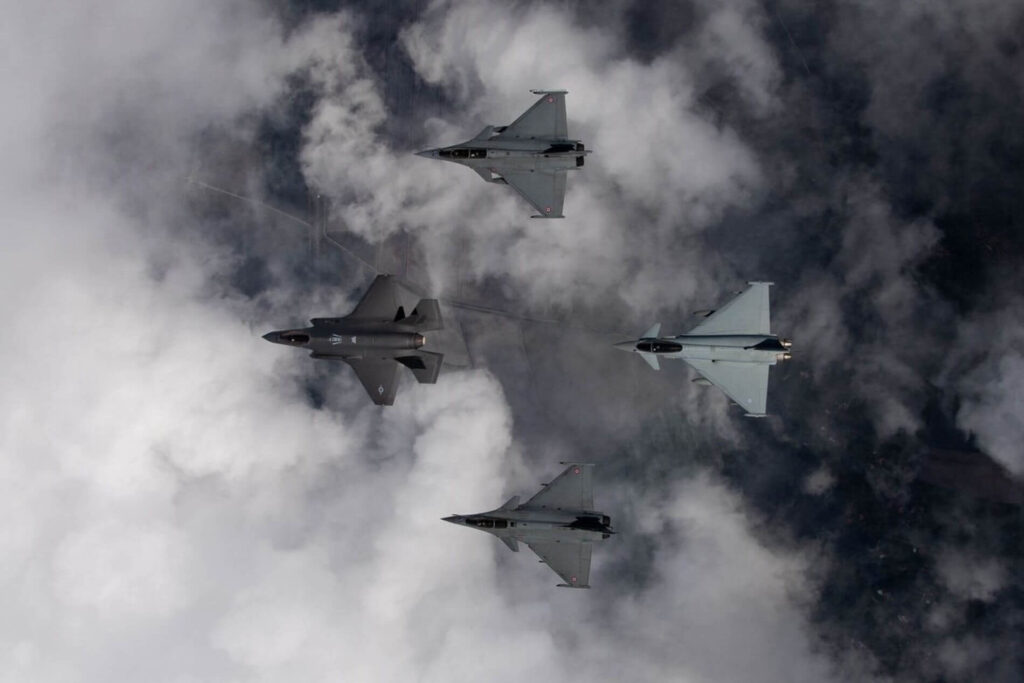As Russian cruise missiles began to strike Ukraine on February 24, 2022, Europe unanimously reacted.
One such response was the near-instantaneous increase in defense spending, announced by most European countries. Almost all of those that did not meet the NATO guideline of 2% of GDP spent on defense, such as Germany, Italy, Spain, Norway, Slovenia and Czechia, pledged to reach the threshold in the coming years.
In countries where spending was already in line with NATO’s recommendations, such as the UK, France, Poland, Romania and the Baltic states, it was still decided that they would further increase their percentage of spending.
Many of these spending promises, even with a concrete monetary value attached, lacked detail with regards to how these countries would be spending the money. But there is a clear reason for this. The budget increase cannot be planned in a day, and we will have to wait months, even years, before we are able to find out where the money went.
However, those initial announcements were accompanied by hints that suggested the very particular needs of European militaries. And it seems as though European air forces will be among the primary benefactors.
New fighter jets
Germany’s decision to allocate a one-time €100 billion boost to its armed forces, effectively tripling its military budget for 2022, received the most publicity, not least because of the sheer size of the budget, but because of the concrete plans that accompanied the announcement.
Almost simultaneously, Germany announced that it was choosing to procure a fleet of US-made F-35 fighter jets.
Germany has been mulling a replacement for its ageing nuclear-armed Panavia Tornados for several years. However, the decision has stalled. But it seems that the start of the war, and the subsequent boost to the country’s budget, has finally pushed Germany to complete the deal.
Greece is another country that could soon be receiving the F-35s. While plans to procure the jet were already in place before the conflict in Ukraine, the sale had not been confirmed by the US. On March 5, Greece’s Defense Minister Nikos Panagiotopoulos confirmed the US “was interested” in selling the jet to Greece. He also added that the country will be ramping up a long-standing program to upgrade the Hellenic Air Force’s older General Dynamics F-16 fighter jets. Additionally, the Mediterranean country sharply increased its order of Dassault Rafales, adding six planes to its already existing order of 18.
During the first week of the invasion, there was much discussion about Poland also upgrading its F-16s. For a while, the country was offering its Soviet-era MiG-29s in exchange for the latest variant of General Dynamics’ fighter jet, in a rather peculiar scheme to provide Ukraine with combat aircraft. The scheme failed, likely, at least in part, because the F-16 production line is already overstretched.
This was underscored on March 10, 2022, when The Ministry of Defence of the Slovak Republic announced that the country’s order of F-16s, scheduled to arrive in early 2023, will be delayed by at least a year.
However, an even bigger blow was received by the FCAS, the pan-European program to develop a joint sixth-generation fighter jet. As the war in Ukraine has spurred the continent to increase its defense spending, the FCAS stalled once again, with its two participants, Airbus and Dassault, unable to agree on the details of the development.
Drones galore
However, another pan-European program, Eurodrone, has advanced, as the contract to produce the aircraft was finally signed on February 24, coinciding with the first day of the invasion.
While likely not connected to the war and the rise in spending, the Eurodrone contract underscores the increase in focus that European powers were placing on unmanned aerial vehicles.
A number of countries proclaimed interest in the combat capabilities provided by drones. The Baltic states led the charge, with Lithuania doubling down on its earlier unsuccessful attempts to purchase American combat drones, and Latvia advancing its deal with Turkey for a shipment of Bayraktar TB2s.
While Poland’s efforts to hasten F-16 deliveries stalled, another of the country’s efforts, to speed-up the procurement of US-made MQ-9 Reaper drones, was accelerated during the first few days of March.
At the same time, Germany has included combat drones in its defense spending boost wish-list, and the Portuguese Air Force also announced an intention to purchase its first-ever fleet of UAVs.
Meanwhile, Romania signed a €300 million deal with Israel to procure an unspecified number of drones for the Romanian Air Force, citing tensions in the region.
In addition to these developments, a slew of European countries, including the Netherlands, Lithuania, Finland, and France, have purchased various anti-drone systems to combat the threat of enemy UAVs, whose effectiveness was once again proven in Ukraine.
Conclusion
In addition, Spain and Czechia have placed additional orders for armed helicopters, with the latter stating that the situation in Ukraine proved there was a greater need for the machines. Furthermore, the conflict seemed to have spurred the Franco-Spanish program to upgrade its Eurocopter Tiger attack helicopters to MkIII standard, a development that was not expected to happen before 2023.
While it is no surprise that the outbreak of the largest conflict in Europe since the Second World War has prompted an unprecedented rise in defense spending, the emphasis on air defense is clear. And it will only continue to increase from here, as more and more armed forces decide what to do with their ever-expanding budgets.
